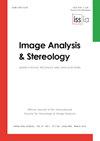组织形态学(体视学)显微结构参数在预测椎体抗压强度中的作用
IF 1
4区 计算机科学
Q4 IMAGING SCIENCE & PHOTOGRAPHIC TECHNOLOGY
引用次数: 28
摘要
骨矿物质密度(BMD)和骨压缩强度之间的关系是骨质疏松症诊断和骨折风险评估的基础。同时,这种关系显示了相当大的分散结果,因为相同矿物质密度的骨头可能具有显著不同的性质。实验证实,具有相同微观结构的两种材料或组织具有相同的性质,这导致了各种定量立体参数的评估(在生物医学中也称为组织形态学)。这些参数是从2D或3D图像分析中获得的,已经在许多解释骨强度变化的尝试中使用。虽然评估了许多相关依赖项,通常具有高相关系数,但我们不知道哪些参数值得评估,并且没有对这些关系的物理解释。基于微型ct扫描的23个腰椎(L3)的3D图像和随后的压缩试验结果的分析,完成了扩展的统计分析。提出了表征三维小梁结构质量的新参数SDF(结构破坏因子),并论证了其重要性。最终的相关函数仅使用三个立体参数,从而可以相当精确地预测抗压强度。估计值与表观值有很好的相关性(相关系数r=0.96)。最后,选择了最适合表征骨压缩强度的立体参数,并提出了力学性能变化的机制。获得的结果定义了诊断技术的必要改进,这将允许更有效的定量微观结构评估和指导如何改善骨质疏松患者的治疗。本文章由计算机程序翻译,如有差异,请以英文原文为准。
ON THE ROLE OF HISTOMORPHOMETRIC (STEREOLOGICAL) MICROSTRUCTURE PARAMETERS IN THE PREDICTION OF VERTEBRAE COMPRESSION STRENGTH
The well-documented relation between bone mineral density (BMD) and bone compression strength constitutes the basis for osteoporosis diagnostics and the assessment of fracture risk. Simultaneously, this relation demonstrates a considerable scatter of results as bones of identical mineral density may have significantly different properties. The experimentally confirmed theorem that two materials or tissues of identical microstructure have identical properties leads to the evaluation of various quantitative stereological parameters (also referred to in biomedicine as histomorphology). These parameters, obtained from analysis of 2D or 3D images, have been used in numerous attempts to explain changes in bone strength. Although numerous correlation dependencies, often with high correlation coefficients, were evaluated, we do not know which parameters are worth evaluating, and there is no physical interpretation of these relations. An extended statistical analysis was accomplished on the basis of analysis of 3D images from 23 lumbar (L3) vertebrae scanned with micro-CT and the results of subsequent compression tests. A new parameter called SDF (structure destruction factor) was proposed in order to characterise the quality of 3D trabecular structures, and its significance was demonstrated. The final correlation function, which uses only three stereological parameters, made it possible to predict compression strength with considerable precision. The estimated values correlated very well with the apparent values (correlation coefficient r=0.96). Finally, the stereological parameters most suitable for characterisation of bone compression strength were chosen and a mechanism responsible for the changes in mechanical properties was proposed. The results obtained defined the necessary improvements in diagnostic techniques that would allow for more efficient quantitative microstructure evaluation and guidelines on how to improve treatment of patients with weakened bones.
求助全文
通过发布文献求助,成功后即可免费获取论文全文。
去求助
来源期刊

Image Analysis & Stereology
MATERIALS SCIENCE, MULTIDISCIPLINARY-MATHEMATICS, APPLIED
CiteScore
2.00
自引率
0.00%
发文量
7
审稿时长
>12 weeks
期刊介绍:
Image Analysis and Stereology is the official journal of the International Society for Stereology & Image Analysis. It promotes the exchange of scientific, technical, organizational and other information on the quantitative analysis of data having a geometrical structure, including stereology, differential geometry, image analysis, image processing, mathematical morphology, stochastic geometry, statistics, pattern recognition, and related topics. The fields of application are not restricted and range from biomedicine, materials sciences and physics to geology and geography.
 求助内容:
求助内容: 应助结果提醒方式:
应助结果提醒方式:


